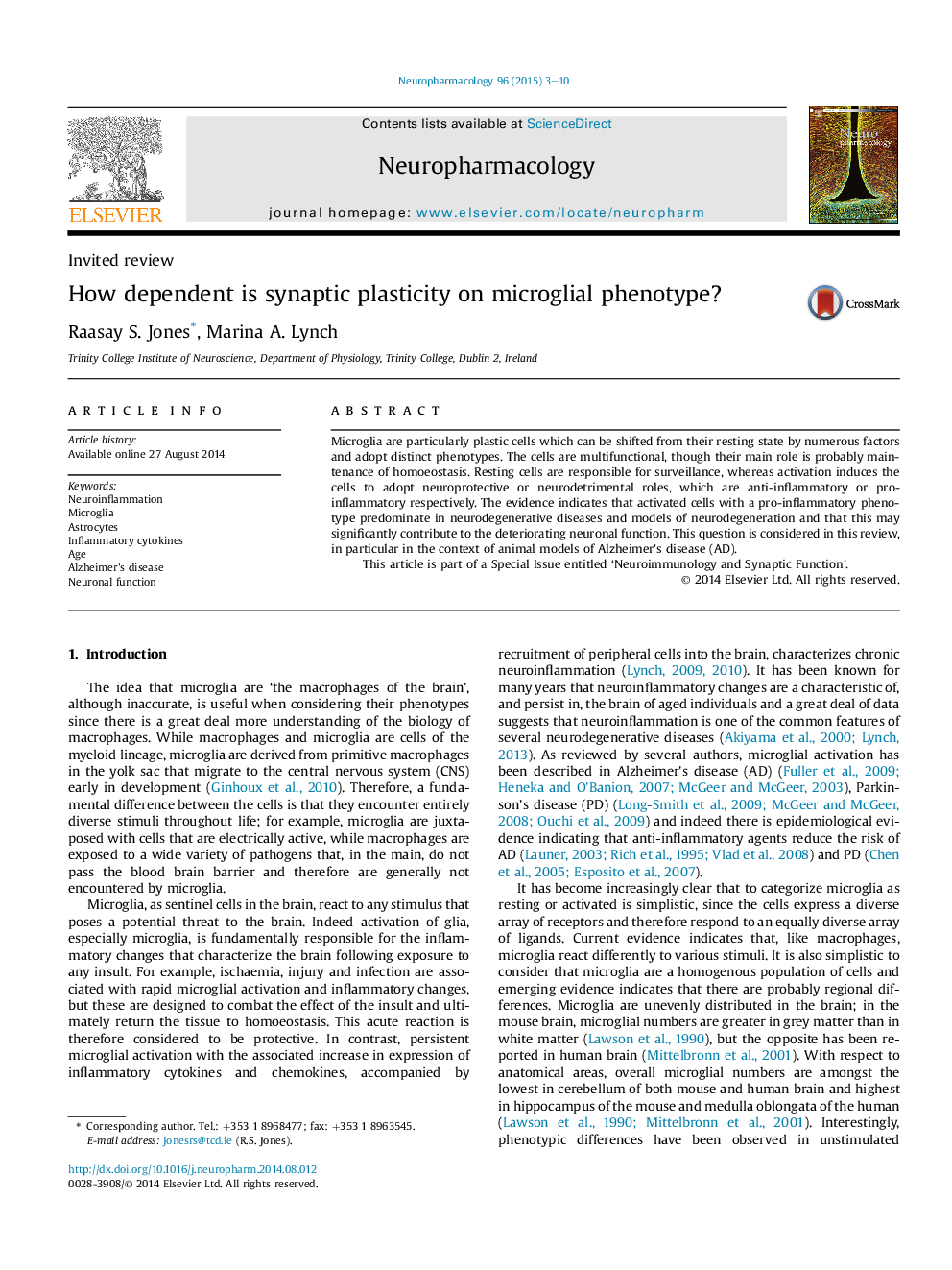| کد مقاله | کد نشریه | سال انتشار | مقاله انگلیسی | نسخه تمام متن |
|---|---|---|---|---|
| 2493175 | 1115481 | 2015 | 8 صفحه PDF | دانلود رایگان |
• IFNγ and TNFα induce microglia to adopt a classically-activated, or M1, phenotype.
• IL-4 and IL-13 induce the alternatively-activated, or M2, phenotype.
• M1 activation is associated with impaired synaptic function and neurodegeneration
• Aβ, microglial activation and impaired LTP are features in animal models of AD.
• The driving force behind these changes remains to be elucidated.
Microglia are particularly plastic cells which can be shifted from their resting state by numerous factors and adopt distinct phenotypes. The cells are multifunctional, though their main role is probably maintenance of homoeostasis. Resting cells are responsible for surveillance, whereas activation induces the cells to adopt neuroprotective or neurodetrimental roles, which are anti-inflammatory or pro-inflammatory respectively. The evidence indicates that activated cells with a pro-inflammatory phenotype predominate in neurodegenerative diseases and models of neurodegeneration and that this may significantly contribute to the deteriorating neuronal function. This question is considered in this review, in particular in the context of animal models of Alzheimer's disease (AD).This article is part of a Special Issue entitled ‘Neuroimmunology and Synaptic Function’.
Journal: Neuropharmacology - Volume 96, Part A, September 2015, Pages 3–10
